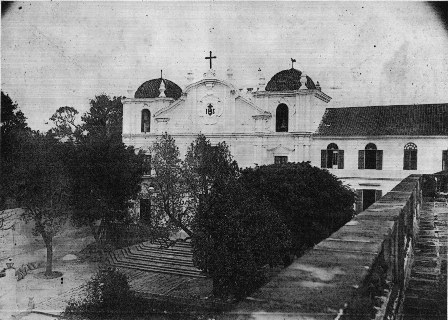Rua de S. José and St. Joseph’s Seminary and Church
The Rua de S. José is one of the earliest cobblestone streets of Macao and its name appeared in the list of designations of street and road announced in the Macao Government Gazette published in 1869. In June, 1945, the Catholic newspaper, O Clarim, had produced an advertisement for “George V. Smirnoff Studio”, which undertook works related to arts, decoration and architectural design. As the Studio was located at building no. 12 of Rua de S. José where the St. Joseph’s Seminary and Church were just within its vicinity, these religious structures naturally became the subject matters of Smirnoff’s paintings.In 1728, the Jesuits founded the St. Joseph’s Seminary atop Mato Mofino Hill of Macao which was used for training of its clergies sent to conduct missionary work in China. It became the administrative centre for religious affairs of the Jesuits in China. The Seminary houses a rich collection of Chinese and foreign ancient books and manuscripts while its Church is a classic elegance. The nave of the Church has a majestic organ, confessional and the relic of St. Francis Xavier displayed on the altar to the right. The Catholic Church of the Orient places much important to this piece of sacred relic.
The Rua de S. José was opened up alongside the construction of the Church of St. Joseph’s Seminary. It was once a muddy pathway running from Mato Mofino Hill to the fishing village at Interior Harbor.











